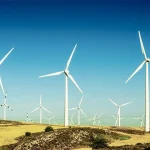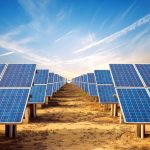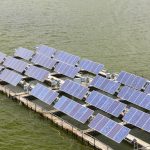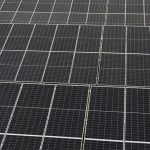THE latest report from Ember, an energy think tank, shows that China’s solar module exports surged by a third to 114 GW in the first half of the year. Notably, exports to Africa experienced the most significant growth, an astonishing 187% increase. This surge was primarily propelled by substantial rises in South Africa, where the country imported 3.4 GW, a remarkable leap from 0.6 GW in H1-2022.
According to an analysis by Johannesburg-based economist, Gaylor Montmasson-Clair, from The Industrial Policy Strategies (TIPS), a South African think-tank, US$650 million (R12 billion) worth of solar panels were imported into South Africa in the first six months of 2023.
This is particularly noteworthy considering that the value of imports in the first half of 2023 is more than double the entire value imported in 2022, which stood at US$295 million (R5.6 billion).
Amidst South Africa’s ongoing struggle with load shedding, private solar installations have surged, not only alleviating energy woes but also sparking a 5% surge in employment in the second quarter of 2023, according to a report by Price Waterhouse Coopers (PwC) research and reports division, Strategy&.
Released in August, the South Africa Economic Outlook for Q2 of 2023 highlights a growth in employment that has outpaced expectations, especially given the heightened levels of load-shedding.
According to the report, a total of 784,000 additional jobs were created in South Africa in Q2 of 2022.
“This substantial increase in employment contrasts with South Africa’s weak economic growth… the increase is encouraging and reflects a growing resilience on the part of private businesses against the negative impacts of electricity outages,” the report goes on to say.
Eskom’s data reveals over 4,400 MW of rooftop solar had been installed in the country by private households and businesses as of June 2023, with a remarkable 349% surge in installations in just over a year. It’s worth noting that this is separate from the government-procured solar under the REIPPP program, estimated at 2,200 MW.
The report attributes the surge in rooftop solar adoption to high electricity costs, supply interruptions, and a growing demand for green power. Moreover, this trend is expected to continue gaining momentum in the foreseeable future as both private and public initiatives take shape.
Operation Vulindlela, for instance, a collaborative effort between the Presidency and National Treasury aimed at expediting the implementation of structural reforms and bolstering economic recovery, is currently monitoring a pipeline of 10,000 MW in private sector energy generation projects.
This is occurring simultaneously with an anticipated surge in on-grid solar capacity, projected to increase anywhere from 110% to 420% by 2030. PwC predicts that this category, predominantly led by Independent Power Producers (IPPs), will escalate from the current 2,300 MW to 3,700 MW in 2025 and 5,800 MW by 2030.
The accelerating surge in private solar adoption is expected to have a further positive impact on the power supply in the country as it will enhance individual business operations. This sets the stage for a more optimistic economic growth outlook for 2024 and beyond.
“We expect the economy to grow by 1.0% next year, or as high as 1.3% under an upside scenario, the authors of the Strategy& report from PwC underscore.
The International Energy Agency expects solar power to be the largest source of electricity by 2027 and will be key to rapidly reducing emissions across the global power sector.













